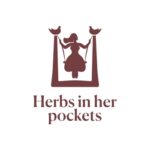Manousos lifts the bell-shaped lid of a 150-year-old copper distillation vat to reveal a thick layer of Cretan dittany leaves and flowers. The process of extracting their essential oils is almost finished and the aroma fills the room. His methods are the same as those used in Lasithi for hundreds of years.
Manousos remembers the traditional herbalists who would travel from village to village selling sage oil for stomach pain, oregano oil for toothache, and cedar oil for swollen tonsils. “There are many more healing plants on the island, of course,” he says, letting me in on a traditional recipe called sarantavotano, a combination of 40 plants that is regarded as a very effective defense for the body.
There are many healing plants on the island of Crete and a traditional recipe called sarantavotano is a combination of the top 40 that are regarded as an effective defense for the body.
The plants were customarily collected all year around by the women of the village and boiled in an earthenware pot reserved for this purpose. The tea that resulted from this process was regarded as working miracles in strengthening the immune system and treating all sorts of ailments. “Newborns were dunked into a trough full of sarantavotano nine times,” says Manousos, before launching into a recital of the recipe, which comes in the form of a mantinada:
“If your health is gone and you want to get it back,
the herbs from the earth are by far your best tack;
Citrus leaves and lemon scent, mandarins, oranges and quince…”
In Crete, herbs and plants have been used for their medicinal properties for 4,000 years or more. In fact, Manousos has found drawings by an Italian archaeologist who studied the distillation methods used by the ancient Minoans and, based on these, is in the process of building a 150-liter, three-chamber distillation pot at a ceramics workshop in Thrapsano. The bottom section will contain the water, the middle part will hold the herbs and the top portion will collect the essential oils.
It is a device that was eons ahead of its time technologically, and while knowledge of it and of other processes was nearly lost over the course of the centuries, this wisdom is gradually being rediscovered. This is also the case with a range of natural cosmetic products and perfumes that were among Minoan Crete’s most important exports millennia ago.
